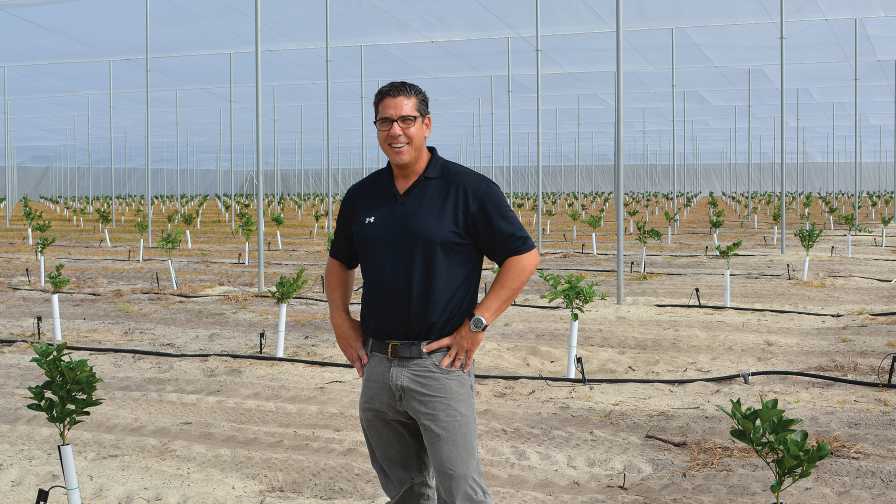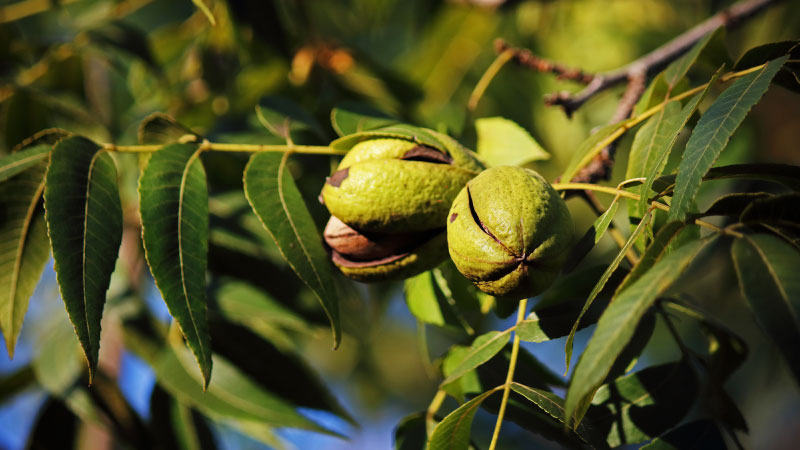Citrus Achievement Award Winner Knows How to Block out What’s Bugging Him

Ed Pines believes the future of Florida citrus is inside. Part of growing indoors is excluding the citrus psyllid and the deadly disease it vectors.
Photo by Frank Giles
[Editor’s Note: This interview was conducted and article written before Hurricane Irma’s impact]
This is the third installment of four special features honoring the 2017 Florida GrowerSM Citrus Achievement Award winner Ed Pines, Owner of EIP Citrus in Lake Wales.
What pests can be excluded from groves by planting citrus under protective screen (CUPS)?
Pines: Pest exclusion is one of the primary purposes of the CUPS system. The 50 mesh screen we use will keep the Asian citrus psyllid from entering the structure, which keeps HLB from infecting the planting. Since planting in August 2016, no psyllid has been found in the structures.
The screen also keeps out other pests like Diaprepes (root weevils) and leafminers. The structure acts a windbreak to reduce the potential of canker spores entering.
Brazil has citrus variegated chlorosis (CVC) and Florida already has the sharpshooter, which is the vector of the disease. It is probably only a matter of time before we see CVC here. The structure will exclude the sharpshooter, and other potential invasive pests in the future.
Thrips and mites can penetrate the structure, but we don’t have any problem managing them with standard practices.
Outside of pest control, CUPS provides some cold protection and will reduce sunburn, wind, and hail damage.
How did you learn more about building CUPS structures?
Pines: These types of structures are used extensively all over the world, so it is not a new practice, even though it is new for Florida citrus. We visited Spain and Costa Rica to see the how the structures are built there.
My structures and those that are built by our company, EIP Citrus, are professionally engineered and designed.
My structures are inland, but they are insured to withstand winds of 80 mph. And, they are insurable because of the engineered design.
Special thanks to Arysta LifeScience for sponsoring the Citrus Achievement Award.









